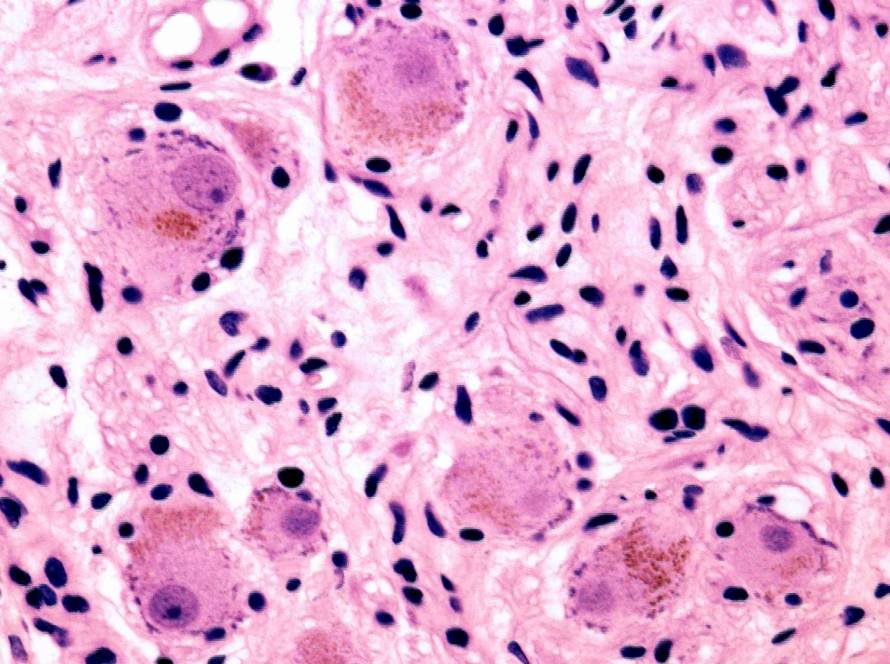It might be a surprise to learn that some types of stress could help us live longer. Scientists call this hormesis longevity.
Let’s walk through how hormesis affects health and longevity. We’ll learn how this biological principle works and ways to potentially extend our lifespan.
What is hormesis and how does it affect aging
Hormesis is a fascinating biological phenomenon where low doses of normally harmful stressors can trigger beneficial adaptive responses in the body. This biphasic dose response relationship shows low dose stimulation and high dose inhibition. The concept challenges our typical understanding of how stress affects us.
The science behind beneficial stress responses
Hormesis works through the body s compensatory biological response. Mild stressors activate repair pathways that not only fix minor damage but strengthen our defense systems beyond their normal state. The body responds by producing more molecular chaperones, antioxidant enzymes and immunological factors that might slow aging.
The numbers tell an interesting story: beneficial responses usually show a 30-60% improvement compared to control groups. These changes happen throughout the body, from individual cells to entire organ systems.
Research has uncovered several important pathways in hormetic responses, including NF-κB, MAPK, AMPK and mTOR signaling cascades. These mechanisms help repair tissue, restore cellular balance and make the body more resilient.
How hormesis is different from chronic stress
The biggest difference between hormetic and harmful chronic stress lies in how long it lasts, how intense it is and how recovery happens. Chronic stress keeps the sympathetic adreno medullar (SAM) and hypothalamic pituitary adrenal (HPA) axes constantly active. Hormetic stress comes and goes, letting the body recover fully between exposures.
Chronic stress throws the body off balance by keeping stress hormones high. This weakens immune function and damages many body systems. Hormetic stressors do the opposite, they turn on survival pathways that make biological systems work better. They can even slow aging by activating protective mechanisms throughout the body.
Timing matters a lot, the benefits of hormesis usually show up during recovery. This makes hormesis a development based adaptive strategy. The body learns to handle future challenges by becoming stronger after mild stress exposures.
The biological mechanisms of hormesis in longevity
Mild stressors trigger complex biological pathways that boost longevity by activating specific molecular mechanisms. These beneficial adaptations help organisms resist future damage and can extend their lifespan at the cellular level.
Cellular repair pathways activated by mild stress
Stress response pathways activate powerful cellular defense systems through mild stressors. Scientists first identified the heat shock response as a biochemical reaction to slight temperature increases. This response boosts the expression of chaperone proteins that refold damaged proteins and stop harmful aggregation. The unfolded protein response (UPR) kicks in like in cases where proteins become misfolded in the endoplasmic reticulum. This promotes cell survival by optimizing the balance between protein load and folding capacity.
The cell’s internal recycling system, autophagy, becomes more efficient after hormetic challenges. Studies of C. elegansmutants show that all but one of these long-lived specimens display increased macroautophagy. This highlights autophagy’s vital role in longevity.
Mitochondrial hormesis (mitohormesis)
Mild mitochondrial stress creates widespread beneficial effects through mitohormesis. This involves coordinated communication between mitochondria and the nucleus, known as mitonuclear communication.
Low levels of reactive oxygen species (ROS) act as vital signaling molecules rather than causing damage. ROS activate transcription factors like NRF2, HSF1 and FOXO family members. This triggers protective responses throughout the cell.
The mitochondrial unfolded protein response (UPRmt) plays a key role in extending life. Research shows that blocking specific mitochondrial ribosomal proteins extended worms’ lifespan by activating UPRmt. Mitochondria can release signaling molecules called “mitokines” that signal stress to distant tissues, similar to bacteria’s quorum sensing.
Antioxidant and anti-inflammatory responses
The cell’s resilience improves through enhanced antioxidant capacity from hormetic stress. Nrf2 pathway controls hundreds of genes involved in detoxification and antioxidant defense, making it a master regulator.
Activities like calorie restriction, exercise and temperature stress create resistance to oxidative damage and chronic inflammation. These interventions reduce inflammation in adipose tissue, which leads to better insulin sensitivity and metabolic health.
Key hormetic stressors that can extend lifespan
Beneficial stressors have shown amazing potential to extend lifespan when people use them correctly. These stressors boost our body’s adaptive responses and strengthen our cellular defenses against damage that comes with aging.
Exercise as a powerful hormetic stimulus
Physical activity stands out as the most extensively studied hormetic intervention to increase longevity. The benefits come from how exercise activates multiple protective pathways in our bodies.
Exercise boosts mitochondrial health through mitochondrial hormesis (mitohormesis). This temporary stress on energy systems makes mitochondria work better. Physical activity also increases antioxidant enzymes like superoxide dismutase (SOD). Research shows that harder workouts associate with higher SOD activity.
Resistance training becomes particularly important as we get older. The controlled muscle tissue damage creates repair processes that make muscle fibers stronger over time. Keeping muscle mass through resistance training plays a vital role in our quality of life as we age.
Caloric restriction and intermittent fasting
Reducing calorie intake without causing malnutrition helps various species live longer. Research reveals that caloric restriction (CR) dramatically cuts age related nephropathy in rats from 68% to just 1%, even though they live much longer.
Intermittent fasting triggers similar beneficial pathways. Cells change their metabolism during fasting periods and start autophagy, a process where cells recycle their damaged parts. The 16:8 fasting schedule (16 hours fasting, 8-hour eating window) is an easy way to begin.
Temperature exposure (heat and cold therapy)
Cold exposure creates beneficial physiological responses. Short cold-water immersion (10-15°C) strengthens the immune system by increasing leukocyte and monocyte levels. It also speeds up metabolism, improves insulin sensitivity and reduces inflammation.
Saunas complement these benefits through heat stress. Regular sauna sessions activate heat shock proteins that protect against protein damage, reduce muscle loss and shield against neurodegenerative diseases.
Phytochemicals and natural compounds
Plant compounds are a great way to get hormetic stress. Substances like curcumin, resveratrol, sulforaphane and EGCG activate cellular defense mechanisms in small doses. Sulforaphane from broccoli, to name just one example, activates the Nrf2-ARE pathway that protects against oxidative stress.
The Mediterranean diet includes many hormetins, molecules that work with stress-response transcription factors, found in olive oil, spices and herbs. These compounds boost antioxidant levels, decrease inflammation and improve heart health, much like other hormetic stressors.
Practical hormesis strategies for everyday life
We don’t need extreme measures or complicated regimens to add hormesis to our daily life. A thoughtful mix of mild stressors can help us build resilience and boost our longevity. Research shows hormetic benefits can improve baseline functions by 30-60%. These strategies are worth learning about.
Creating an effective hormetic routine
The secret to successful hormesis starts with small steps and builds consistency. Start with quick exposures, maybe 30 seconds of cold water when we finish our shower or a 12-hour overnight fast. Our body will adapt and we can slowly increase intensity or duration based on how we respond.
Temperature based hormesis works best when we switch between hot and cold. Begin by ending our showers with 30 seconds of cold water before we move to longer cold plunges. Sauna sessions of 15-30 minutes at around 170°F several times weekly can kick start beneficial heat shock proteins.
Exercise might be the most available hormetic stressor. Mix up the routine with:
- Strength training with weights or resistance bands;
- Moderate intensity cardio (brisk walking, cycling);
- High-intensity interval training to maximize hormetic response.
Combining different hormetic stressors
Multiple mild stressors could create even better results together. We might want to pair complementary practices like morning fasting with exercise or cold exposure after heat therapy. The timing matters though, giving ourself enough recovery time between stressors is essential to don’t cross into harmful territory.
Nutritional hormesis works well with other approaches. Add beneficial phytochemicals through foods rich in resveratrol (berries, grapes), sulforaphane (broccoli, Brussels sprouts), curcumin (turmeric), quercetin (apples, onions) and EGCG (green tea). Research reveals something unexpected, antioxidant supplements might work against beneficial exercise adaptations. Stick to whole foods instead.
Monitoring our hormetic response
Finding our personal stress “sweet spot” makes all the difference. Hormesis works in a narrow window, too little stress brings no benefit, while too much becomes harmful. Watching how we feel during and after exposure is essential.
Our unique approach matters since our genetic profile, epigenetic factors, pre/post-natal stress exposure and lifestyle habits affect hormetic responses. As we start this trip, it’s important to notice when stressors stop helping. Hormesis should make us stronger, not drain our resources over time.
Each hormetic method has its own benefits. The best results often come from mixing different approaches together. The most important thing is staying consistent rather than pushing too hard.
Hormesis reveals something fascinating about human biology, we grow stronger through calculated challenges. Our body has a natural ability to repair and regenerate. Strategic exposure to mild stress could help us tap into this power, potentially adding quality years to our life.


